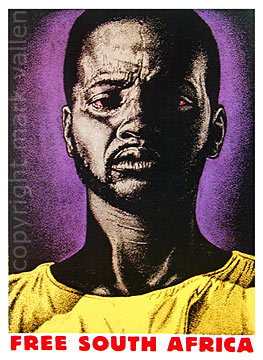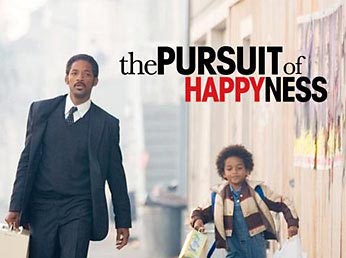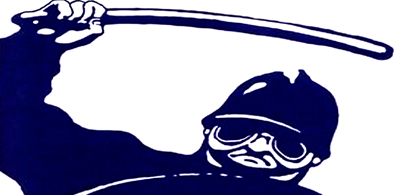The Pursuit of Happyness
Back in early September of 2005 I received an e-mail from Columbia Pictures that expressed their desire to use one of my artworks in the film, The Pursuit of Happyness. The letter politely informed me that the studio was interested in my “Free South Africa poster and using it as background set dressing in the movie.” At the time the film was in pre-production, and it was thought my 1980’s era poster would make the perfect prop – “Since our film takes place in the early 80’s, we would like to use art that speaks to that time period.”

After further correspondence with Columbia Pictures, arrangements were made for my poster’s usage – sealing its destiny to appear for a few brief moments in a major Hollywood motion picture starring Will Smith. I never knew if my poster would make the final cut, or where in the film it might turn up – until now. More than a year after first being contacted by the studio, The Pursuit of Happyness is opening in theaters, and I see that my poster makes a brief but prominent appearance.
In case you haven’t heard, the film is based on the true-life rags-to-riches tale of Chris Gardner, who went from being a marginally employed salesman to a wealthy investment banker. The movie follows Gardner and his five-year-old son as they are evicted from their San Francisco apartment, and with nowhere to go they take to sleeping in subway stations, homeless shelters, and bathing in public restrooms. Quite by chance Gardner becomes an intern at a prestigious stock brokerage firm, and while trying to survive with his son, struggles to make his dreams of a better life for the both of them come true.

The movie derived its title from the misspelled name of the daycare center where Gardner left his son while working. In point of fact, this is where my poster appears in the film, wheat-pasted to the outside walls of the Happyness Daycare Center. Eventually Gardner’s dreams are fulfilled beyond his wildest expectations, and he becomes a multimillionaire – but the journey from the street to the boardroom took 10 years. Technically, it has been said that the film does an excellent job of re-creating the look of the San Francisco Bay Area of twenty-five years ago. That my poster, Free South Africa, came to be included in the movie is certainly one indication that the producers were paying strict attention to historic details.
I created my Free South Africa poster in the summer of 1985, just as the international anti-apartheid movement was truly gaining strength and influence. My poster was given away at anti-apartheid rallies and protests across the U.S., and sold internationally through a network of progressive poster distributors. The image was wheat-pasted on the streets of Los Angeles and San Francisco as college students across California joined the protest movement that would force the California University system to divest all of its holdings in racist South Africa. The artwork was circulated at the demonstrations in Beverly Hills, California, that eventually succeeded in permanently shutting down that city’s Consulate for the white minority South African government. The poster was carried on picket lines held in front of coin shops selling the South African Krugerrand, in a successful campaign that eventually banned the importation of the gold coin from the racially-segregated Republic. In short, my poster had an extremely visible and active street life – especially in California.
I created my first mass-produced silkscreen street poster in 1979, and for nearly ten years afterwards produced dozens of other anonymous underground posters and flyers, including Free South Africa. During this period my politicized street posters blanketed the boulevards of Los Angeles. Mine were the first bilingual, Spanish-English political posters to hit the streets of L.A. in the early 80’s, but I always worked clandestinely – my hand remaining incognito. While some artists have built entire careers out of promoting themselves as “guerrilla” poster artists, wheat-pasting themselves to fame and fortune, it has always been my position that the best political street poster art is done anonymously. The finest example of this would be those still nameless artists who created the brilliant street posters of protest from the student/worker uprising of Paris ‘68 – their efforts placing paramount importance on delivery of a clear message. There is a major contradiction between enjoying art star status, while at the same time proclaiming oneself to be a guerrilla artist.
The Pursuit of Happyness has as its actual star the mythic American dream story, where anyone can become financially successful through dedication and hard work. While it’s said “everyone loves a winner” and “a happy ending”, I’d still like to see Hollywood tackle the stories of those real-life people who’ve struggled and worked hard all of their lives but never even came close to achieving their dreams. Odds are that describes a huge number of people, and as yet, their stories haven’t appeared on the silver screen. I also find it ironic that a poster once considered controversial, and used by activists who were willing to be beaten, arrested, and jailed for a cause – has became set dressing for a popular “feel good” movie. As the American satirist Ambrose Bierce once said, “Radicalism is the conservatism of tomorrow injected into the affairs of today.”


